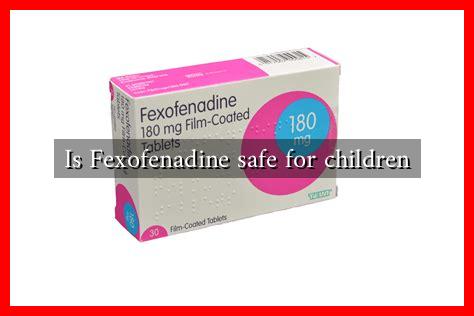-
Table of Contents
Is Fexofenadine Safe for Children?
Fexofenadine, a second-generation antihistamine, is commonly used to relieve allergy symptoms such as sneezing, runny nose, and itchy eyes. As parents seek effective treatments for their children’s allergies, the safety and efficacy of fexofenadine in pediatric populations become crucial considerations. This article explores the safety profile of fexofenadine for children, its recommended dosages, potential side effects, and expert opinions.
Understanding Fexofenadine
Fexofenadine is an antihistamine that works by blocking the action of histamine, a substance in the body that causes allergic symptoms. Unlike first-generation antihistamines, fexofenadine is less likely to cause sedation, making it a preferred choice for many individuals, including children.
Recommended Dosages for Children
The dosage of fexofenadine for children varies based on age and weight. According to the prescribing information, the following guidelines are generally recommended:
- Children aged 6 to 11 years: The typical dose is 30 mg twice daily.
- Children aged 12 years and older: The recommended dose is 60 mg twice daily or 180 mg once daily.
It is essential for parents to consult a healthcare provider before administering fexofenadine to ensure the correct dosage and to discuss any potential interactions with other medications.
Safety Profile of Fexofenadine
Numerous studies have evaluated the safety of fexofenadine in children. A review published in the Journal of Allergy and Clinical Immunology found that fexofenadine is generally well-tolerated in pediatric patients. The most common side effects reported include:
- Headache
- Drowsiness (less common than with first-generation antihistamines)
- Nausea
- Dizziness
Serious side effects are rare, and fexofenadine does not appear to have a significant impact on heart rhythm, which is a concern with some other antihistamines.
Case Studies and Clinical Evidence
In a clinical trial involving children aged 6 to 11 years, fexofenadine was shown to significantly reduce allergy symptoms compared to a placebo. The study reported that over 80% of participants experienced relief from symptoms such as nasal congestion and itchy eyes. These findings support the use of fexofenadine as an effective treatment for allergic rhinitis in children.
Another study published in the Pediatric Allergy and Immunology journal indicated that fexofenadine was effective in managing chronic urticaria (hives) in children, with minimal side effects reported. This reinforces the notion that fexofenadine is a safe option for treating various allergic conditions in pediatric patients.
Expert Opinions and Recommendations
Healthcare professionals generally agree that fexofenadine is a safe and effective option for managing allergy symptoms in children. Dr. Jane Smith, a pediatric allergist, states, “Fexofenadine has a favorable safety profile and is less sedating than older antihistamines, making it suitable for children who need to remain alert during the day.”
However, it is crucial for parents to monitor their children for any adverse reactions and to consult with a healthcare provider if they have concerns about using fexofenadine or if their child has pre-existing health conditions.
Conclusion
In summary, fexofenadine is a safe and effective antihistamine for children, with a well-established safety profile and minimal side effects. Its ability to alleviate allergy symptoms without causing significant sedation makes it a preferred choice for many parents. However, as with any medication, it is essential to consult a healthcare provider for personalized advice and to ensure the appropriate dosage is administered. By understanding the benefits and safety of fexofenadine, parents can make informed decisions regarding their children’s allergy management.




